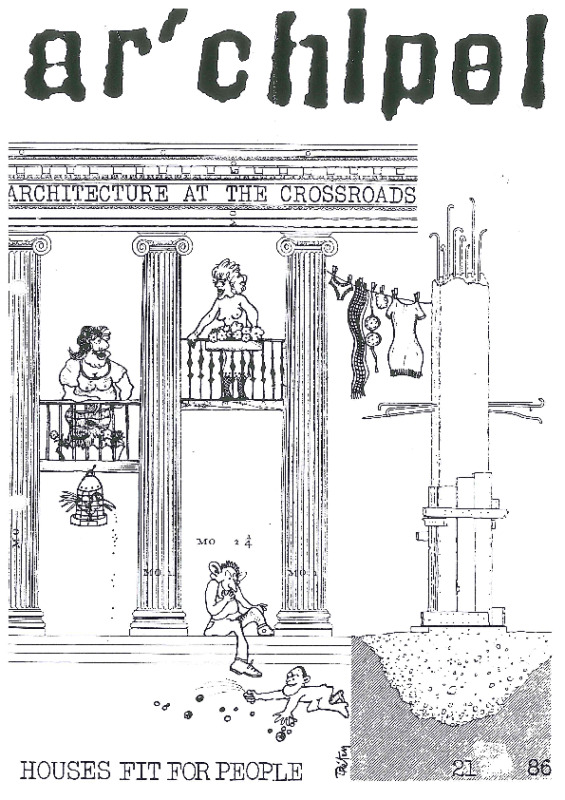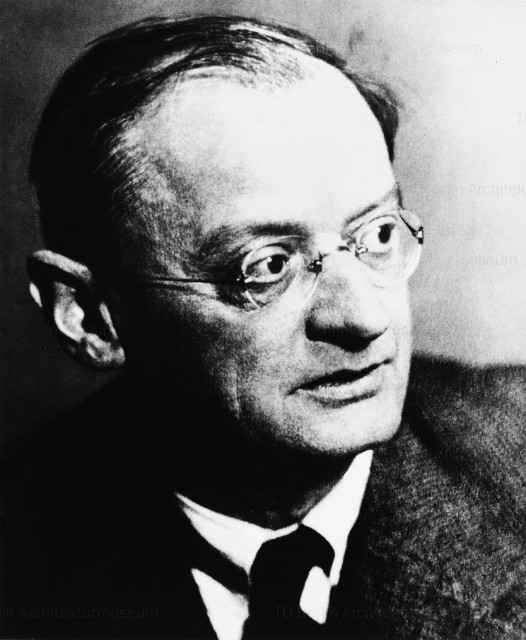Houses fit for People + WISH
In collaboration with:
Vereniging Algemene Aannemers Bouwwerken uit Brugge
(autotranslated) The German Siedlungen formed from the thirties ambitious, enthusiastic efforts of a young generation of architects: Le Corbusier, Gropius, Mies van der Rohe … The program starts with the Berlin Siedlung by Bruno Taut in 1930. The belief in a “radiant” future resonated after the sixties. The Berlin unité d’habitations (Le Corbusier 1957) and Walter Gropiusstadt (1960) were the leading models. The models were acquired internationally on a large scale. Their reproduction brought profound doubts triggered, and even a Mies van der Rohe at the end of his life wondering “what the hell went wrong?”.
The modernist road was also further explored. Runcorn New Town: Sterling 1967 … Marne la Vallée: Henri Ciriani 1980 (“revelation since the unité d’habitation” dixit Kenneth Frampton). The monumental Alexandra Road: Brown 1977. But the average internationally reproduced “containerarchitektuur” licked off reactions. The shuttle hit back. The modernist faith was reduced to zero. A flood of Anglo-Saxon vernacular, picturesque housing-projects reverted to the traditional tema programs. Individual houses, gabled roofs, bricks, streets and squares, gardens, the district and village. Camillo Site proved again aktueler than CIAM.
It was followed by a counter-reaction: the sleek neo-Corbusian Maiden Lane: London 1983, Benson and Forsyth. A reaction against “cosiness”, but already prey to vandalism. In Berlin took Rob Krier, together with six architects, the tema “urban block” as a component of the city again. For Bauaustellung 87 was Berlin in a residential yard recreated which has nothing in common with the earlier achievements from the 60s in France built Ricardo Bofill around Paris postmodern “” Les Arcades du Lac “. It was with some “fear” described as the “Versailles pour le peuple” or by others with “humor” and “Chenonceaux pour les pauvres”. Palladio and Ledoux were further quoted in the monumental “Palais Abraxas” and “Le Theatre” Bofill. Not far arose “Les Arenes de Picasso” by Nunez (“Ode to Ledoux” – according to some, “to Camembert” according to others).
But also in France knew the nostalgic, vernacular ghettoes with their traditional references a popular success, however, while Roland Castro in Marne la Vallée and Henri Gaudin in St Quentin en Yvelines, against the current, controlled, quiet and peaceful, modern design further explored. The program concludes with a Housing Estate in London’s Covent Garden district of O’Conham. A typical product of English and gallery construction cluster … and finally with the thought that modern architecture can also further continue to offer a contemporary alternative to the sad “containers” on the one hand, and the “imitations” of the past on the other hand …
On the occasion of this event, a small special exhibition organized around WISH submissions.
In 1982 Jo Crepain launched in a number of A + architektuurwedstrijden a cry for help: “In Belgium, we are nowhere. In the country where the profession and the title of architect best protected, the least given to architecture. Besides the patronage of some private individuals or businesses, the state price and realization of some contests, the chaos continues, the banality, the scourge of corruption; architektuurwedstrijden are certainly not the only way to improve quality, but this road has made his mark more than earned abroad. It is high time that the government picks up the gauntlet here … “
Already two years later Jo Crepain could look back on WISH 84: 6 contest winners for the construction of 150 social housing units (10% of the social housing production). There followed 85 WISH …
In order to visually situate the debate on the WISH, we have requested their submissions on a number of participants. This is not a representative exhibition, but a rather random selection of entries, collected from archipelago members and others. To give you the opportunity to view the panels previously quiet, the doors open from 19u.30.
Panel discussion AND DEBATE
Sieg Vlaemink (moderator)
- Degree in social sciences and urban and regional planning;
- Teacher Provincial Higher Architektuurinstituut Hasselt
- Juror WISH
Jo Crepain
- Architect
- Teacher Shias (Municipal Higher Institute of Architecture & Urban Planning) in Ghent
- Guest lecturer at Maastricht, Rotterdam, Nantes
- WISH founder and chairman of the jury
- Prizes and contest winner
Marc Bollen
- Architect
- Laureate WISH 85th Province of Antwerp Kapellen
Pierre Huygebaert
- Architect
- Higher teacher Architektuurinstituut Ghent
- Laureate WISH 84 (in collaboration with L. Haegen) – Province of West Flanders Kuurne
Jaak Janssens
- Architect
- Laureate WISH – Province of Limburg
Calm discussion, engaging … to controversies erupting ideëenkonfrontaties … The past fruitful discussion evenings (with the public as a very active panelist) appeared around the BBC series “to the point” to go. Architecture is (still) negotiable. This is evident. Whether one agrees with the statements or she rejects. The positions taken by the program makers and the examples are certainly kontroversieel enough to lead to an interesting debate.
A debate in two parts:
- Panel discussion, following on the program, examples and stances;
- Debate on social housing in Flanders, on konkreto: WISH matches.
WISH is on the divergent views were expressed:
- Enthusiastically: “social housing in Flanders is now permanently stores the road to the year 2000: These are the beacons for the future …” (Minister Buchman, after WISH 84)
- Mildly, skeptical, but hopeful: “commendable initiative but one swallow does not make spring nie; the architecture itself is not fundamentally improved with WISH, but, as architektuurwedstrijden WISH no means unimportant … The growing number of serious competitions, their impakt will gradually grow and increase the architektuurpeil “(Philippe Laporta, after WISH 85).
- To negative: “… a game like WISH can not change the social housing as long as it accepts as a social factor in its existing structure, jazelf confirms … is rather clearly how architecture and competitions over maybe ever, geaccapareerd by the existing system and used. “(Bart Doucet after WISH 85).
“Therefore, we need to be the popular housing decent and possess everything in the house of the wealthy belongs only to a lesser extent, with smaller dimensions.” LB Alberti (mid XV century). “Des maisons à loger destinées lesson pauvres, doivent tenir quelque chose de la pauvreté”. M. Laugier in “Essai sur l’architecutre” (1755).
“One begins to see that the worker and the machine needs a good home, he wants much much produce” D.O. Engelen (1870).
“The term public housing says a lot in itself: it is the house of the people. The simple definition makes the concept already lost much of its innocence. Housing is an active, transitive verb. It has no reciprocity in itself. It houses not himself. In the absurd hypothesis that everyone has a similar property would have given that there is virtually no difference anymore would be noticeable between the villa of the director and the villa of his subordinates, nor between a residential area for executives and a residential area for workers, there even no real distinction districts would exist, then the housing problem would not be solved. The solution does not exist in everyone to share equally in the prosperity and culture, as long as a few planned by prosperity and culture.
I do not discriminate the importance of vormgevingsaspekten, but appearance is not unusual in itself, and is, moreover, not innocent. The reality for which it stands can not hide them. The difficulty in the case of the housing is that there is no straight path exists for a solution. The only solution is to do away in an abusive power and achieve a more equitable distribution of power among the living. That power distribution can not get there by renouncing housing, because it will be even more than now at the mercy of blind speculation powers. If there is a task for public housing is reserved is the alienating forces in the field of living off and transferring them to whom they are in a society that calls itself democratic, legitimate award: the resident “Geert Bekaert “Housing, what is that?” (06/22/1976).
“Even without residents in the (preliminary) design phase it doable to be architecture conceiving these possibilities open late, which does not preclude any subsequent changes, for changing its use for the future participation of unknown residents.” But it is precisely in the fight with the standards that some designer task to search: I WISH, the imaginative of the match should include lie in the intensity of that battle: creating designs that can be traced not meet standards but , designs whose existence not only due to standards. Charles Vermeersch : “Footnotes to WISH’84 in A + n ° 86 (1985).
“This initiative grew out of the concern to give new impetus to the social housing by encouraging research and experiment. Should be sought for improvements that cover all aspects of the housing problem in its broadest sense. This is also in the belief that all aspects thoroughly studied project or from the introduction to the notes to “WISH’85”. We must not forget that a people living here, which once built the beautiful cities and cathedrals. It is not possible that the same people now only firm can build networks and excel in banality and bad taste. “Belgium, the ugliest country in the world”: we’re all a little responsible for it, but architects and politicians do a little bit more than the average Joe. The scoop they can us already no longer snatch: WISH’84 came first in Flanders and there has been good: we feared that would develop in the jury officials from the administration and representatives of users contradictory and even irreconcilable views compared to architects, proved rather the opposite. About real quality apparently is an unwritten consensus which will be felt across all segments and classes, all intellectual levels, all political parties and ideologies.
The task of the jury is not completely finished. She has a moral obligation made to follow the projects and see if they are built in the spirit in which they are designed. The ideas must still grow, mature and become richer. Jo Crepain: “Initial concerns about the initial results, WISH’84” A + n ° 86 (1985).
A miracle indeed it may be called if today from such trench theorem suddenly WISH a new architectural vision would grow. And still adorns the match WISH, the construction companies and the participants, when from such historical mortgage inability openly sought the innovative impulse. From this context a number of designers have succeeded in the housing policy to give more color in a few weeks time. J. Baele & Jan Bruggemans in “WISH’84: variant played on a tema” A + n ° 86 (1985).


